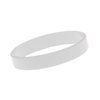KNOW YOURSELF
Of the 3 paths taken to move up to the next class this is perhaps the most difficult and the most rewarding. We expect our students to eventually know themselves so that they realize when they are ready to move to the next class. Knowing oneself takes time and this level of proprioception is rare in beginner students so we also offer the other paths: Trials and Passports.
+ Know Yourself description

A student who takes the know yourself path is self-motivated and does not need to wear a level band because they are extremely involved in their parkour community, their instructor knows exactly where they are at in their training because they train often and they need no reminder to be motivated because they live and breathe parkour.
Many students who take this path often find themselves training with great variety but are often in danger of missing something in their training. The recommendation for those who take this route is to find something that you aren't good at and master it often.
For safety, if you take this route you will need instructor permission to join the next class.

+ Wristbands

At the beginning when a student starts class they begin with a white wristband.
They are completely optional to wear but not wearing a wristband communicates to instructors when there are new students in the class. Upon completion of a level members are awarded with a new wristband for that class level. There are additional costs for students who are not members.
The wristbands serve not only as a marker of your achievement but also as a tool for Instructors to use during regular classes. The wristband gives them a heads up to the physical capabilities of the students in their classes, so that they can better tailor their instruction to each student and set up courses that are appropriate to students’ skill level. Wristbands can also help a student identify which other students might be able to help them if they have a question or need clarification on a technique.


